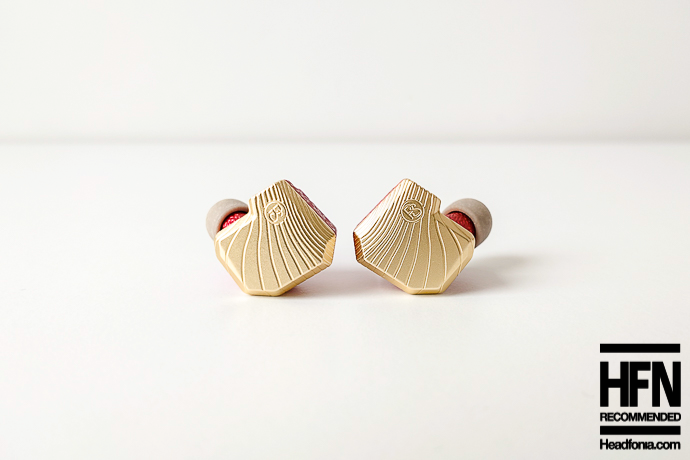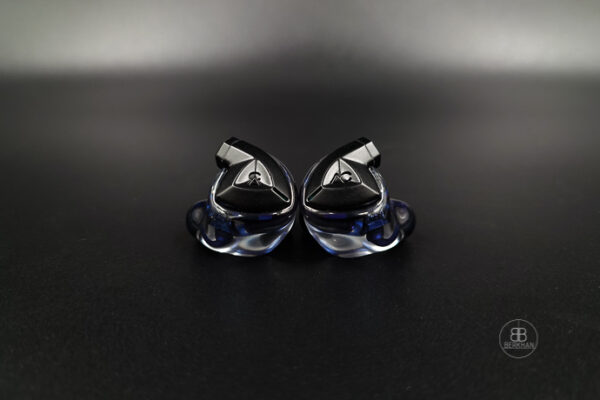If Google is showing you this page directly, click here to go to the start of the article.
Technical Performance
First and foremost, the PlusSound Sonora is a highly resolving IEM. It has a reasonably wide but studio-type staging with a somewhat sterile approach. It expands the extension into the treble range and gives high-end notes more energy and sharpness with more focus. But there’s a high resolution over the whole spectrum and sharp imaging. The soundstage could’ve been wider and more spacious, though. The stage is more significant than average, but I expected more.
The new Sonora is a good example of a properly made flagship IEM. There’s fantastic resolution and transparency, together with separation and layering. It’s fabulous to hear those micro details, extending highs and dynamic and vibrant mid-range, and it’s a very clean delivery.
The balance and coherency are very good, and since it eliminated the treble issue of the Allegro, the Sonora sounds seamless, smooth and consistent. Both can be resolved with foam tips. The imaging is sharp and organised, and the stage depth is impressive. I could only imagine what this IEM could do if it had more space regarding stage width. Regardless, it still gives a clear picture of the whole recording, with excellent positioning and definition.
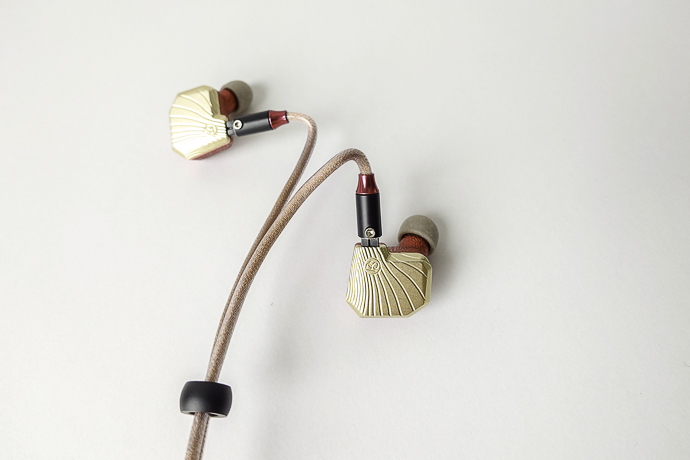
When you pair the Sonora with flagship sources like Hugo 2 or HiBy RS8, you experience top-end technical performance. Sonora can undoubtedly compete with the best the market offers. However, it still performs excellently with mid- to high-range units such as the Sony WM1AM2, so pairing it with high-end units is not mandatory.
However, the character of the source unit plays a vital role in the presentation. For example, I tested the Sonora with the new Cayin N6III (soon to be reviewed here), and the presentation was quite lovely but a bit too vibrant. When I went with the Sony WM1AM2, I liked the coherency and presentation more. The WM1AM2 is a more neutral-sounding unit, so it paired well with the Sonora. I would say go for a neutral and flat-sounding source with it.
Another noteworthy aspect is the sensitivity. The Sonora is very sensitive; background noise from some sources, especially dongle DACs, can be heard. So, a high-performer source unit is required for the background.
Comparisons
The Lime Ears Anima V2 is a recently released high-end IEM with an impressive monitor. Its blue faceplate and silver ring make it unique in terms of design and build. However, the Sonora looks even more impressive and has better and more robust build quality. The Anima also has a better and more comfortable fit.
Sound-wise, the Sonora’s mid-bass is fuller, and the Anima V2 has more sub-bass definition. The Sonora has better timbre, while the Anima V2 has more impressive bass, especially in the rumble. However, I think the Sonora’s bass is a bit more realistic and musical, and it has a better mid-bass texture.

PlusSound Sonora shines in the mid-range with excellent definition, transparency and tonality. In comparison, Anima’s mid-range is laid-back and less in-your-face, but its vocals are brighter and more aggressive, especially in the upper mid-range. Lower mids have better timbre in the Sonora, while upper mids are more impressive in the Anima.
Treble-wise, Anima has a bright delivery, while Sonora differs because it has a smoother and more refined approach. However, the Anima has more air and space in terms of staging. Its treble response is sometimes too bright, depending on the recording and the ear tips. To me, the musical quality of the Sonora is more enjoyable.
The Campfire Audio Astrolith is an excellent release from Campfire. Like the Sonora, it has excellent build quality and a striking space design. Although I still think the Sonora looks better, that is subjective. The Astrolith is a better fit.
In sound, the Astrolith’s planar driver performs well in the bass, with excellent kick and decay qualities. However, the Sonora performs similarly well, with excellent PRaT and texture. In the mids, the Sonora wins, with well-executed fullness and realism and great musicality and note weight.
In the treble, the Astrolith is a bit more aggressive and attacking. Foam tips cancel out the possible fatiguing presence, so the Astrolith performs nicely with foams. The Sonora, on the other hand, provides a smoother and more approachable treble with better fatigue comfort. They both have similar sound-stage performances, but I think the Sonora has better layering.
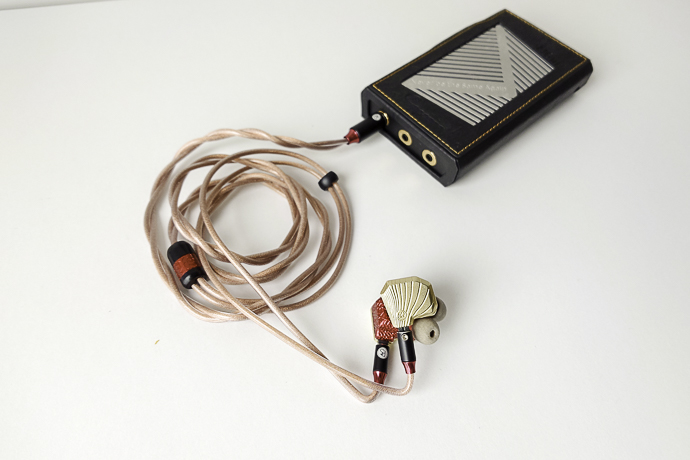
Both the Annihilator and Sonora perform similarly, but they have distinct differences. The Annihilator emphasizes the sub-bass more, offering good texture and presence in the mid-bass. In contrast, the Sonora features are equally defined as mid-bass and sub-bass. The enhanced mid-bass in the Sonora provides a solid foundation for note weight and musicality in the lower mid-range, giving it an advantage in instrumental timbre, resulting in a more musical and organic sound.
The Annihilator has outstanding clarity and excellent detail, definition, and articulation in the treble range. The Sonora is also very good but not as impressive as the Annihilator in this region. It makes the treble smoother, which is very comfortable, but it isn’t as impressive. Both are slightly limited in width and very good in depth in the sound stage. The Sonora, to me, has better layering, but the difference isn’t huge. Both are excellent IEMs, but the Sonora has the edge in mids and bass balance, and the Anni is better in the treble.
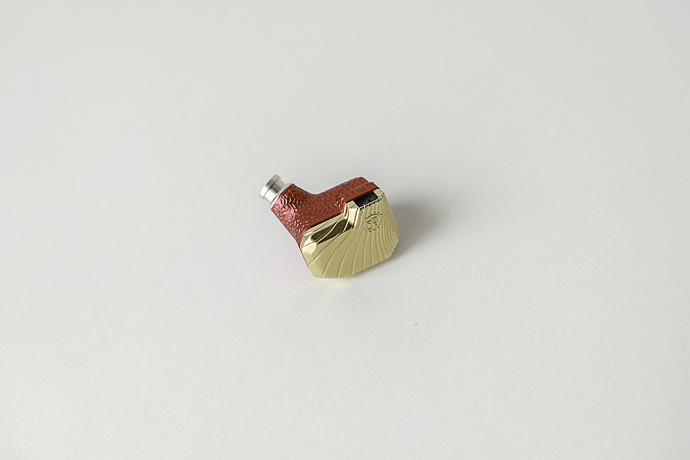
Conclusion
The new PlusSound Sonora is an enjoyable, rich, organic flagship IEM that excels in technical performance. Every package aspect, from build quality to design and sound, exudes luxury and quality.
It surpasses expectations with a musical sound characterized by excellent body, balance, and coherence. The treble response shows notable improvement over the Allegro, which is delightful, and the overall performance is outstanding.
The Sonora produces a sound with high resolution, transparency, and clarity. If you desire warmth, musicality, euphonic tonality, or a powerful bass with impressive layering, you should consider the Sonora. It’s a dream IEM for fans of the Sony IER-Z1R. Just imagine an even better Z1R—that’s what the Sonora offers. It goes to our Best IEM Recommendations.

Summary
Pros:
- Fantastic build quality
- A good amount of accessories
- Striking design
- Mid-range timbre
- Excellent layering
- Great imaging
Cons:
- Fitting can take some time
- The cable is heavy
- Not cheap
Page 1: Intro, Packaging, Build Quality and Design







